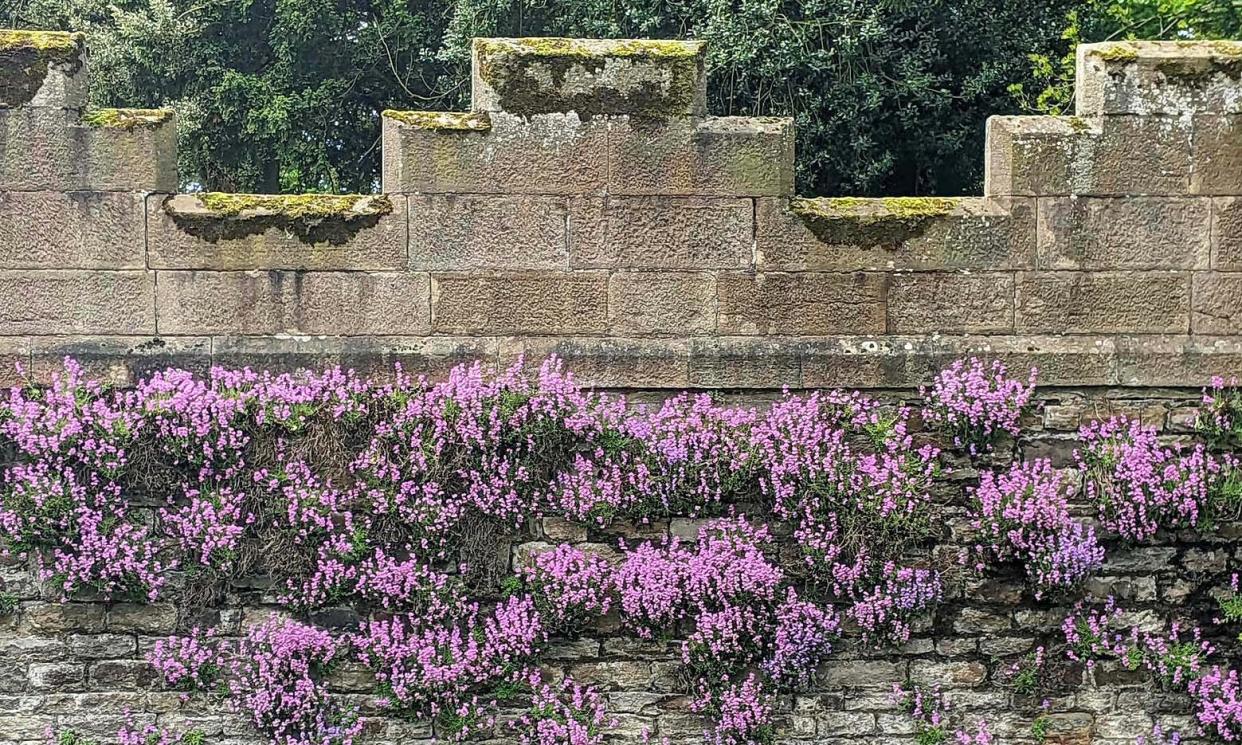Country diary: The prettiest of castle flowers – but how did it get here?

Guerrilla gardening, the illicit – some say anarchic – planting of garden flowers to brighten up urban public spaces, has become popular, even respectable. It cocks a snook at authority, brightens urban environments and generally pleases the public. This kind of surreptitious gardening has a long history.
We’ll probably never know who the community-minded horticultural benefactor was who introduced fairy foxglove (Erinus alpinus), a Pyrenean native alpine flower, to the walls of Stanhope Castle. It was first formally recorded here in 1934, but it may already have been well established. Every June its tiny leaf rosettes, rooted in crevices between masonry blocks, enliven the grey castle ramparts with a head-turning display of tiny purple flowers.
Fairy foxglove has long been known to botanists as “the Roman wall plant”, ever since members of the Berwickshire Naturalists Field Club found it flowering in the ruins of Chesters Fort on Hadrian’s Wall in 1887. After it was recorded growing at other Roman encampments along the wall, contemporary writers, unencumbered by lack of evidence, ignoring the fact that it been a garden plant in Britain for 150 years, concluded that it must have been brought here by our Roman occupiers. It might even, they suggested, have been carried on the sandals of Spanish legionnaires marching over the Pyrenees, sent to defend Rome’s northern border.
It is a frequently repeated story – is it too good to be true? Well, yes. It transpired that the vicar of nearby Stamfordham, the clergyman-botanist Rev JF Bigge – an unlikely guerrilla gardener – had been scattering seeds around Northumbrian Roman ruins that looked as if they might benefit from a splash of colour. And in turn, might he, and maybe Stanhope’s unknown fairy foxglove sower, have been motivated by the Victorian garden writer William Robinson, a noted admirer of the plant, and advocate for rock gardens and informal, naturalistic styles of gardening? Let it “run wild on old walls”, Robinson recommended, sow seeds “in mossy or earthy chinks”.
This morning, I watched tourists posing for selfies in front of the castle’s eminently Instagrammable fairy foxglove wall. In this digital age, it is a ringing endorsement of the efforts of an unknown guerrilla gardener who, a century ago, introduced this Pyrenean charmer to these old walls.
• Country diary is on Twitter at @gdncountrydiary

 Yahoo News
Yahoo News 
